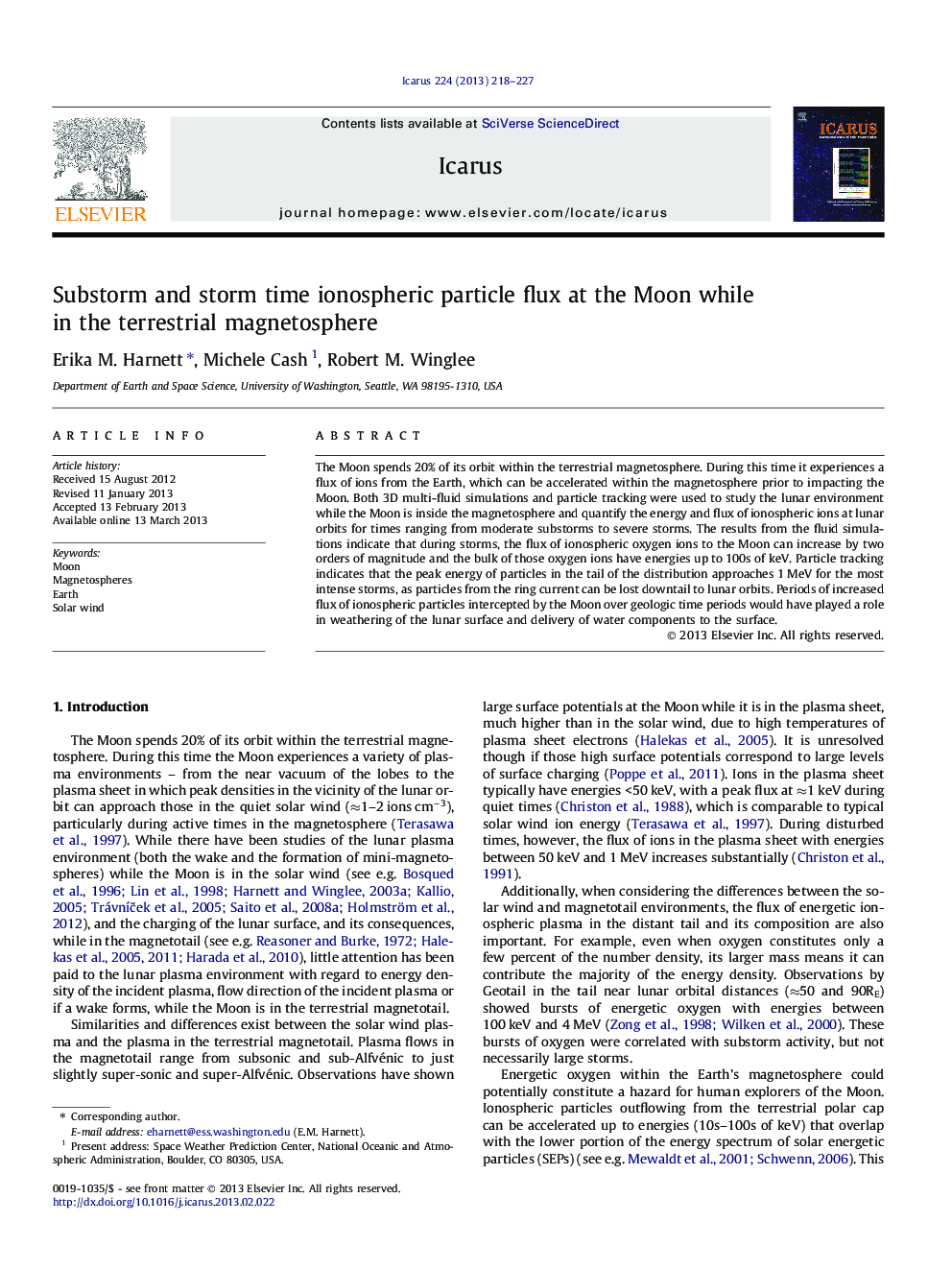| کد مقاله | کد نشریه | سال انتشار | مقاله انگلیسی | نسخه تمام متن |
|---|---|---|---|---|
| 1773543 | 1021137 | 2013 | 10 صفحه PDF | دانلود رایگان |

• The Moon can be impacted by high (∼1 MeV) energy oxygen ions while in the terrestrial magnetosphere during storm conditions.
• The high energy oxygen ions originate from the terrestrial ring current.
• The bulk oxygen ion flux can increase at lunar orbits by two orders of magnitude.
• The flux of oxygen to the lunar surface could represent a source of water group ions.
The Moon spends 20% of its orbit within the terrestrial magnetosphere. During this time it experiences a flux of ions from the Earth, which can be accelerated within the magnetosphere prior to impacting the Moon. Both 3D multi-fluid simulations and particle tracking were used to study the lunar environment while the Moon is inside the magnetosphere and quantify the energy and flux of ionospheric ions at lunar orbits for times ranging from moderate substorms to severe storms. The results from the fluid simulations indicate that during storms, the flux of ionospheric oxygen ions to the Moon can increase by two orders of magnitude and the bulk of those oxygen ions have energies up to 100s of keV. Particle tracking indicates that the peak energy of particles in the tail of the distribution approaches 1 MeV for the most intense storms, as particles from the ring current can be lost downtail to lunar orbits. Periods of increased flux of ionospheric particles intercepted by the Moon over geologic time periods would have played a role in weathering of the lunar surface and delivery of water components to the surface.
Journal: Icarus - Volume 224, Issue 1, May 2013, Pages 218–227